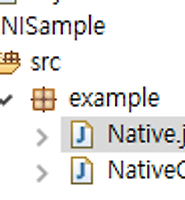| 일 | 월 | 화 | 수 | 목 | 금 | 토 |
|---|---|---|---|---|---|---|
| 1 | 2 | |||||
| 3 | 4 | 5 | 6 | 7 | 8 | 9 |
| 10 | 11 | 12 | 13 | 14 | 15 | 16 |
| 17 | 18 | 19 | 20 | 21 | 22 | 23 |
| 24 | 25 | 26 | 27 | 28 | 29 | 30 |
- Flutter TextField
- Django REST Android
- dart
- livedata
- 안드로이드
- NDK
- android architecture component
- Android
- Java
- FLUTTER
- Django REST
- RxAndroid
- Android P
- android push
- mfc
- 코틀린
- 프로그래머스
- Python
- Rxjava2
- C/C++
- 알고리즘
- C
- RxJava
- flutter firestore
- 안드로이드 구글맵
- C++
- Kotlin
- UWP
- kodility
- Django REST framework
- Today
- Total
개발하는 두더지
[Android] Fragment 를 이용한 탭 만들기 본문
Fragment와 ViewPager를 이용하여 탭을 만들어보도록 하겠습니다.
아래와 같은 순서로 진행됩니다.
-Fragment의 특징
-Fragment의 생명주기
-소스코드
Fragment 특징
기존 Activity는 하나의 화면에 여러개 사용할수없게 설계되어있는 반면 Fragment는
Activity와 비슷한 Lifecycle을 가지면서 여러가지 화면을 넣을 수 있는 방법을 지원해준다.
- Fragment는 Activity와 비슷한 LifeCycle을 가진다.
- Fragment는 하나의 Activity에서 다수의 Fragment를 사용할 수 있다.
- Fragment는 Activity에서만 존재하며 단독으로 실행될수 없는 구조이다
- Fragment는 Activity와 마찬가지로 Back Stack을 사용할 수 있으나, Activity처럼 다양한 Stack방식을 지원하지 않는다.
- Fragment는 Activity와 위에서만 존재하기때문에 다수의 Fragment를 동시에 띄울때 메모리 문제가 될 수 있으므로 너무 복잡한 구조는 지양해야한다.
Fragment 생명주기
* 1. Fragment is added
* 2. onAttach()
* 3. onCreate()
액티비티와 마찬가지로 초기화해야하는 리소스들을 여기서 초기화해줌
주의할점은 UI초기화는 할수없다.
* 4. onCreateView()
Layout을 inflate하는 곳.
View객체를 얻을 수 있으므로, UI초기화를 여기서 진행한다.
* 5. onActivityCreated()
Activity의 onCreate()가 호출되고나서 호출되는 메소드이다.
Activity와 Fragment의 뷰가 모두 생성된 상태로, View를 변경하는 작업이 가능하다
* 6. onStart()
* 7. onResume()
유저에게 Fragment가 보여지고, 유저와 상호작용이 가능하게 되는 부분
* 8. Fragment is active
* 9. User navigates backward or fragment is removed/replaced or Fragment is added to the back stack, then removed/replaced
* 10. onPause()
* 11. onStop()
Fragment는 Activity와 마찬가지로 화면을 완전히 가리게되면 호출된다.
* 12. onDestroy()
* 13. onDetached()
* 14. Fragment is destroyed
결과물
버튼또는 터치슬라이딩으로 탭을 이동할 수 있습니다.
소스코드
activity_main.xml
<?xml version="1.0" encoding="utf-8"?>
<RelativeLayout xmlns:android="http://schemas.android.com/apk/res/android"
android:layout_width="match_parent"
android:layout_height="match_parent">
<LinearLayout
android:id="@+id/ll"
android:layout_width="match_parent"
android:layout_height="wrap_content"
android:orientation="horizontal">
<Button
android:id="@+id/btn_first"
android:layout_width="0dip"
android:layout_height="match_parent"
android:layout_weight="1"
android:text="First Tab"/>
<Button
android:id="@+id/btn_second"
android:layout_width="0dip"
android:layout_height="match_parent"
android:layout_weight="1"
android:text="Second Tab"
/>
<Button
android:id="@+id/btn_third"
android:layout_width="0dip"
android:layout_height="match_parent"
android:layout_weight="1"
android:text="Third Tab"
/>
</LinearLayout>
<android.support.v4.view.ViewPager
android:id="@+id/pager"
android:layout_width="match_parent"
android:layout_height="match_parent"
android:layout_below="@+id/ll"
>
</android.support.v4.view.ViewPager>
</RelativeLayout>
fragment_fragment2.xml
(나머지 탭도 똑같이 만든다)
<RelativeLayout xmlns:android="http://schemas.android.com/apk/res/android"
android:layout_width="match_parent"
android:layout_height="match_parent"
android:background="#FF0000">
<TextView
android:layout_width="match_parent"
android:layout_height="match_parent"
android:textSize="30dp"
android:textStyle="bold"
android:text="Second_Page" />
</RelativeLayout>
Fragment2.java
(나머지 탭도 똑같이 만든다)
package com.example.kjh.viewpager_fragment;
import android.os.Bundle;
import android.support.annotation.Nullable;
import android.support.v4.app.Fragment;
import android.view.LayoutInflater;
import android.view.View;
import android.view.ViewGroup;
import android.widget.RelativeLayout;
public class Fragment2 extends Fragment {
public Fragment2()
{
// required
}
@Override
public void onCreate(@Nullable Bundle savedInstanceState) {
super.onCreate(savedInstanceState);
}
@Nullable
@Override
public View onCreateView(LayoutInflater inflater, @Nullable ViewGroup container,@Nullable Bundle savedInstanceState) {
RelativeLayout layout = (RelativeLayout)inflater.inflate(R.layout.fragment_fragment2,container, false);
return layout;
}
}
MainActivity.java
package com.example.kjh.viewpager_fragment;
import android.support.v4.app.Fragment;
import android.support.v4.app.FragmentManager;
import android.support.v4.app.FragmentStatePagerAdapter;
import android.support.v4.view.ViewPager;
import android.support.v7.app.AppCompatActivity;
import android.os.Bundle;
import android.view.View;
import android.widget.Button;
public class MainActivity extends AppCompatActivity {
ViewPager pager;
@Override
protected void onCreate(Bundle savedInstanceState) {
super.onCreate(savedInstanceState);
setContentView(R.layout.activity_main);
pager = (ViewPager)findViewById(R.id.pager);
Button btn_first = (Button)findViewById(R.id.btn_first);
Button btn_second = (Button)findViewById(R.id.btn_second);
Button btn_third = (Button)findViewById(R.id.btn_third);
pager.setAdapter(new pagerAdapter(getSupportFragmentManager()));
pager.setCurrentItem(0);
View.OnClickListener movePageListener = new View.OnClickListener()
{
@Override
public void onClick(View view) {
int tag = (int)view.getTag();
pager.setCurrentItem(tag);
}
};
btn_first.setOnClickListener(movePageListener);
btn_first.setTag(0);
btn_second.setOnClickListener(movePageListener);
btn_second.setTag(1);
btn_third.setOnClickListener(movePageListener);
btn_third.setTag(2);
}
private class pagerAdapter extends FragmentStatePagerAdapter
{
public pagerAdapter(FragmentManager fm )
{
super(fm);
}
@Override
public Fragment getItem(int position) {
switch(position)
{
case 0:
return new Fragment1();
case 1:
return new Fragment2();
case 2:
return new Fragment3();
default:
return null;
}
}
@Override
public int getCount() {
// total page count
return 3;
}
}
}
'Java,Android' 카테고리의 다른 글
| [Android] Fragment에 구글맵(GoogleMap) 띄우기 (15) | 2017.05.18 |
|---|---|
| [Android] 구글맵 (GoogleMap) SDK 설치 및 API Key 발급 (4) | 2017.05.18 |
| MP4 파일이 스트리밍이 안될때..? MOOV를 이동시켜 해결하기 (0) | 2017.02.16 |
| [C/C++/JAVA/JNI] JNI로 DLL, so 만들어 JAVA 프로젝트에서 사용하기 (0) | 2016.07.28 |
| [Android/안드로이드] Android 와 JSP 간 파라미터 암복호화 (3) (1) | 2016.07.22 |






